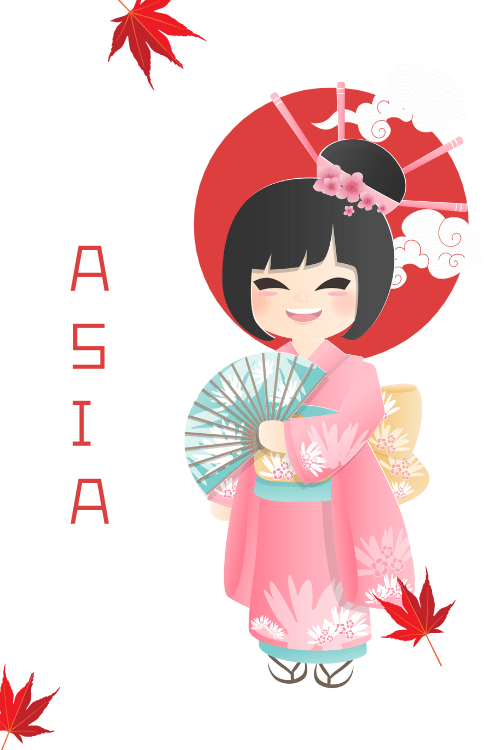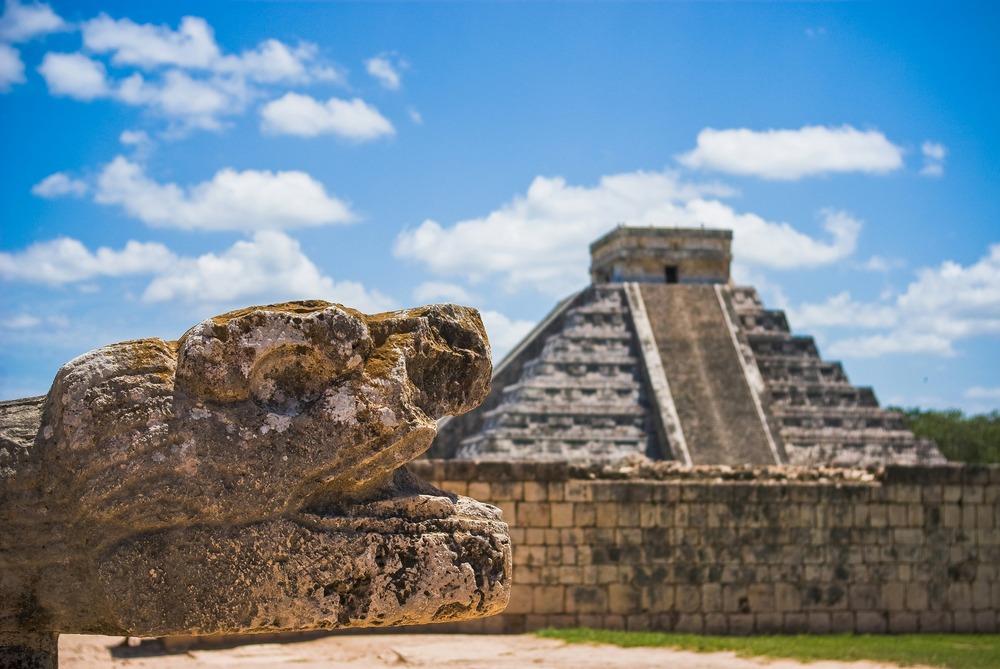eSIM Mexico
Discover the Best Time to Visit Mexico: Your Ultimate Month-by-Month Guide
Mexico’s diverse landscapes and cultural riches demand thoughtful timing for your visit. Coastal hotspots like Cancún and Tulum pulse with energy during dry winters, while Oaxaca’s mountain valleys shine in autumn’s crisp air.
The best time to visit Mexico depends on whether you prioritize empty beaches, festival energy, or avoiding spring break crowds.
Tropical climates rule the Yucatán Peninsula, arid heat defines Baja California, and higher elevations like Mexico City offer year-round spring-like conditions.
Smart travelers match their itineraries to regional weather patterns – whale watching in Baja California Sur peaks January-March, while monarch butterfly migrations dazzle in Michoacán from November-February.
A Mexican eSIM from esim4.com ensures you stay connected whether you’re comparing hotel rates in high season or navigating rainy-season road trips.
Ready-made data plans adapt to your travel dates, eliminating the need for physical SIM swaps between beach days in Playa del Carmen and museum hopping in Guadalajara.
When is the ideal season to explore Mexico’s diverse attractions?
Mexico’s size creates microclimates that defy simple seasonal labels. Coastal regions like Cancún and Los Cabos bake under dry heat in summer, while Mexico City’s high-altitude coolness persists even during rainy months.
The “best” season depends on your tolerance for humidity, love of festivals, and willingness to trade blue skies for smaller crowds.
Understanding Mexico’s climate patterns
Mexico has three main climate zones: tropical (Yucatán Peninsula, Pacific Coast), arid (Baja California, northern deserts), and temperate (central highlands).
The dry season (December-April) brings predictable sunshine, while May-October’s rainy season turns jungles emerald but delivers short afternoon showers. Coastal humidity peaks in August, while December nights in Guadalajara might require a light sweater.
Balancing weather, crowds, and prices
High season (December-April) guarantees beach-ready weather but fills resorts like Playa del Carmen with spring break crowds.
Shoulder seasons (May-June, November) offer lower rates and thinner crowds, though some restaurants in Tulum may close for renovations. Low season (July-October) means rain-dappled afternoons but half-price luxury suites in Cancún – if you don’t mind the occasional tropical downpour.
Best times for beach vacations vs. cultural experiences
- Beach lovers: Target December-April for Riviera Maya’s turquoise waters or March-May for Baja California’s whale-shark encounters
- Culture seekers: Visit Oaxaca City in November for Día de los Muertos altars or Mexico City in September for Independence Day parades
- Mix of both: May-June delivers warm beach days and quieter archaeological sites like Chichén Itzá before summer rains intensify
An esim plan lets you switch between checking live weather radar and booking last-minute museum tickets without hunting for Wi-Fi. Their coverage spans from Cancún’s hotel zones to Oaxaca’s mountain pueblos.
What are the pros and cons of visiting Mexico during the dry season (December to April)?
The dry season lures travelers with postcard-perfect weather, but its popularity comes with trade-offs. While beachgoers bask in Cancún’s 80°F winter waters, savvy cultural explorers use this window to hike Copper Canyon’s frost-free trails or attend Guadalajara’s mariachi festivals under cloudless skies.
Perfect weather for outdoor activities and beach time
December to April delivers Mexico’s most reliable sunshine, with coastal hotspots like Tulum and Los Cabos averaging less than three rainy days monthly. This is prime time for snorkeling in Riviera Maya’s cenotes or whale watching in Baja California Sur, where humpbacks breach near cabo san lucas. Inland cities like Puebla stay warm but avoid summer’s sticky heat, making pyramid climbs at Chichén Itzá less sweat-drenched.
Peak tourist season: Higher prices and larger crowds
Resort rates in Cancún and Playa del Carmen spike 40-60% between Christmas and Easter, while March spring breakers transform Tulum’s beach clubs into foam parties. Even cultural sites like Mexico City’s Anthropology Museum queue longer, though weekday mornings offer brief respites. Book flights and hotels 6-8 months early for December stays near Oaxaca’s radish-carving festival (December 23).
Celebrating holidays and festivals in Mexico’s high season
The dry season packs Mexico’s festival calendar:
- December: Posadas processions and New Year’s fireworks over Acapulco Bay
- February: Almond-tree blooms backdrop Oaxaca’s Guelaguetza dance festivals
- April: Semana Santa (Holy Week) processions flood San Miguel de Allende with pilgrims
Is the wet season (May to November) a good time to visit Mexico?
Mexico’s rainy season rewards flexible travelers with lush landscapes and authentic local experiences. While afternoon showers drench the Yucatán Peninsula in July, Oaxaca’s valleys bloom with wildflowers, and Mexico City’s museums sit blissfully crowd-free. This season suits adventurers who don’t mind trading umbrella dashes for 50% discounts on boutique hotels.
Enjoying lower prices and fewer tourists
Resort rates in Cancún and Puerto Vallarta drop by up to 60% from May to November, with luxury beachfront suites often available for last-minute bookings. Archaeological sites like Tulum’s Mayan ruins feel serene in August mornings, while Mexico City’s restaurateurs have time to explain mole recipes in detail. Even popular attractions like Chichén Itzá’s vernal equinox spectacle draw smaller crowds in late March.
Navigating the rainy season: What to expect
Most regions see short, intense showers between 3-5 p.m., leaving mornings sunny and evenings misty. The Pacific Coast and Yucatán Peninsula get the heaviest rainfall (June-September), while Baja California remains relatively dry. Pack quick-dry clothing and waterproof phone cases – sudden downpours can turn San Cristóbal de las Casas’ cobblestones into temporary rivers.
Best activities and destinations during Mexico’s wet season
- Snorkel with whale sharks off Isla Holbox (May-September)
- Trek Copper Canyon’s thunderous waterfalls (July-October)
- Attend Guelaguetza festival in Oaxaca (July) under dramatic storm clouds
- Explore Mérida’s indoor markets when afternoon rains cool the streets
Which month is best for visiting specific regions of Mexico?
Mexico’s regional diversity means optimal travel months shift dramatically between jungle ruins and surf towns. A November trip could mean snorkeling in Cancún’s bath-warm seas and shivering through Oaxaca’s mountain mornings – pack layers and a flexible itinerary.
Ideal times to explore Mexico City and central Mexico
November to April offers crisp mornings (50-75°F) perfect for museum-hopping and street food crawls. Avoid late March-April when ozone levels rise in the capital. September brings Independence Day parades but also peak rainy days – time your visit to catch the Grito de Dolores fireworks without getting drenched.
Best months for beach destinations: Cancún, Tulum, and Riviera Maya
March-May balances warm seas (82°F) with thinning spring break crowds in Cancún. For Riviera Maya’s cenotes, visit June before hurricane season peaks, when water clarity rivals bottled mineral water. Tulum’s seaweed issues ease November-February, but book early – boutique hotels sell out fast.
When to visit Pacific Coast gems like Puerto Vallarta and Oaxaca
- Puerto Vallarta: January-March for humpback whale sightings and dry hikes to Hidden Beach
- Oaxaca Coast: December-April for surfable waves in Puerto Escondido or July for quieter beach days
- Baja California Sur: February-April to kayak with whale sharks in La Paz’s UNESCO-protected bay
How does the hurricane season affect travel plans to Mexico?
Hurricane season (June-November) brings a mix of bargain rates and calculated risks, particularly for coastal regions. While the Pacific Coast and Yucatán Peninsula face higher storm potential, savvy travelers use this window for cultural deep dives in less-affected areas – think Oaxaca’s mole festivals or Guanajuato’s alleyway art walks.
Understanding the risks and timing of hurricane season
The Caribbean coast sees peak storm activity August-October, with Cancún and Tulum historically facing 1-2 major storms annually. Pacific hurricanes (May-November) mostly target areas like Acapulco and Puerto Vallarta. Central highlands (Mexico City, San Miguel de Allende) rarely experience direct hits but may get heavy rains. Always check the National Hurricane Center forecasts 72 hours before coastal travel.
Safest regions to visit during hurricane-prone months
- Central Mexico: Mexico City’s museums and Puebla’s culinary scene stay storm-free
- Baja California Sur: Desert climate shields Los Cabos from most hurricanes
- Northern Highlands: Monterrey’s mountains and Copper Canyon hiking trails avoid heavy rains
- Interior Yucatán: Mérida’s colonial architecture and cenotes are safer bets than coastal resorts
Travel insurance and precautions for visiting during this time
Opt for insurance covering hurricane-related cancellations (most policies exclude this by default). Pack a waterproof phone case and portable charger – esim data plans keep you connected to storm updates without relying on spotty hotel Wi-Fi. Coastal hotels often offer “hurricane guarantees” with free rescheduling; always ask before booking.
What are the best times to experience Mexico’s cultural events and festivals?
Mexico’s calendar overflows with celebrations that shape its national identity, but timing these with ideal weather requires strategy. Visitors often chase Día de los Muertos’ marigold altars only to battle crowds in Oaxaca’s cramped cemeteries – while missing quieter gems like January’s Tamales Festival in Tlacotalpan.
Celebrating Day of the Dead and Independence Day
Día de los Muertos (October 31–November 2) peaks in Oaxaca and Mexico City, where marigold arches frame streets. Arrive by October 28 to watch families build altars, but expect hotel prices to double. Independence Day (September 15–16) ignites every town square with gritos (shouts) and military parades – Guadalajara’s charro horseback demonstrations are worth the chaos. Pro tip: Pair these dates with monarch butterfly arrivals in Michoacán (November–March) for a nature-culture twofer.
Timing your visit for local fiestas and parades
- Semana Santa (Holy Week, March/April): Processions flood Taxco and San Miguel de Allende, but coastal areas like Cancún swell with vacationers
- Guelaguetza (July): Oaxaca’s indigenous dance festival coincides with rainy season’s lush landscapes
- Fiesta de los Rábanos (December 23): Oaxacan artisans carve radishes into intricate sculptures under crisp winter skies
Balancing cultural experiences with optimal weather conditions
Late October offers Día de los Muertos and the Yucatán’s last dry weeks for Chichén Itzá tours. February pairs Carnaval in Veracruz with Baja’s whale-watching peak.
How can I find the perfect balance between good weather and affordable prices in Mexico?
Strategic timing and regional flexibility let you dodge crowds and downpours without breaking the bank. Below, we break down key strategies with actionable data.
Exploring Mexico during shoulder seasons
Shoulder months (May-June, November) blend mild weather and mid-range pricing. Use this table to match regions with ideal shoulder periods:
| Region | Shoulder Months | Weather Conditions | Perks |
|---|---|---|---|
| Yucatán Peninsula | May-June | Warm, brief showers | 40% off resorts, cenotes crowd-free |
| Pacific Coast | November | 80°F, minimal rain | Whale watching, half-price surf lessons |
| Central Highlands | April, November | 65-75°F, sunny | Museum discounts, festival overlaps |
Budget-friendly alternatives to popular destinations
Swap crowded hotspots for equally stunning (and cheaper) neighbors:
| Popular Destination | Alternative | Avg. Savings | Highlights |
|---|---|---|---|
| Cancún | Isla Holbox | 55% | Whale sharks, car-free island |
| Tulum | Bacalar | 60% | Seven-color lagoon, Mayan canals |
| Puerto Vallarta | Sayulita | 45% | Surf town vibe, jungle waterfalls |
| Mexico City | Puebla | 35% | Baroque architecture, mole tastings |
Tips for scoring deals on accommodations and activities
| Tip | Timing | Avg. Savings |
|---|---|---|
| Book “last minute” rainy season stays | August-September | 50-70% |
| Target city hotels on weekends | Fri-Sun in cultural hubs | 30% |
| Bundle tours with local agencies | Any shoulder month | 15-25% |







